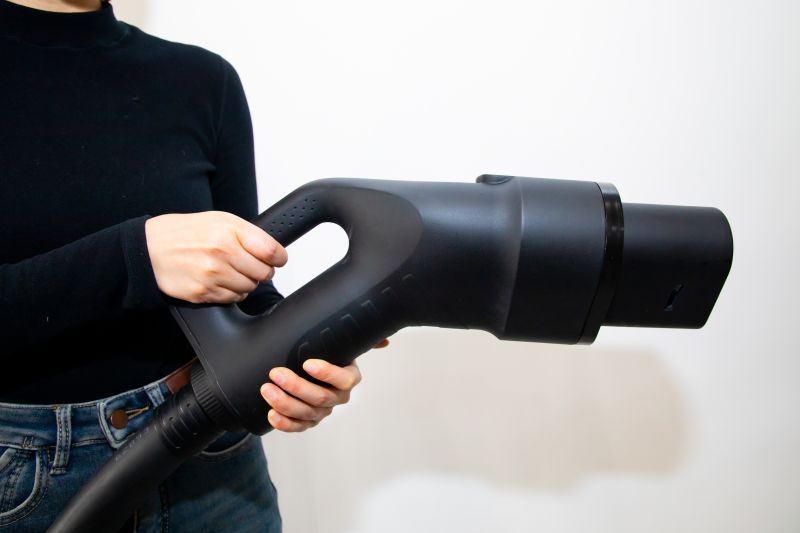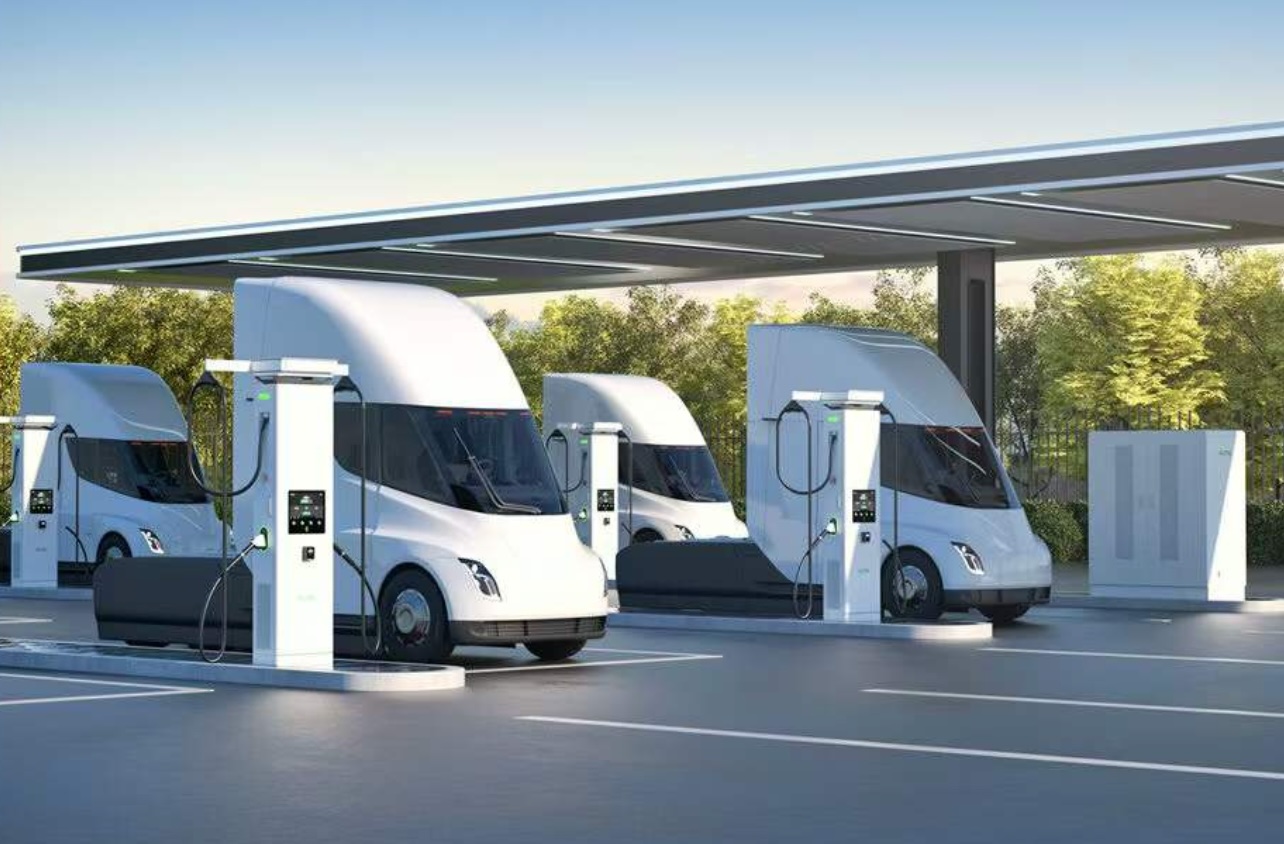Industry news
Current Status and Commercialization Analysis of Megawatt Charging Technology
The electrification of transport is entering a decisive phase with the advent of the Megawatt Charging System (MCS), a breakthrough technology designed to power medium- and heavy-duty vehicles (MHDVs). This high-power charging standard, capable of delivering over one megawatt (MW) of energy, is the key to overcoming the critical barrier of slow charging times for large commercial vehicle batteries. This comprehensive analysis, featuring insights from Fiver New Energy Co.,ltd, a leading manufacturer of high-power charging components, delves into the technical principles of Megawatt Charging. We will highlight the critical role of specialized components like our 1500V/1500A Megawatt Charging Cable and 2.25MW MCS Inlet, and explore the rapid commercialization landscape across North America, Europe, and Asia-Pacific.
1. Understanding Megawatt Charging System (MCS): The New Standard for Heavy-Duty EVs
The transition to sustainable transport hinges on electrifying the commercial sector. The Megawatt Charging System (MCS) is the pivotal technology making this possible by enabling charging speeds comparable to diesel refueling.
1.1 What is MCS? Technical Standards and Power Definitions
The Megawatt Charging System (MCS) is an international charging standard developed by the CharIN alliance to facilitate ultra-fast charging for large battery systems in trucks, buses, ships, and aircraft. The standard, codified as IEC 63379, specifies the requirements for achieving a theoretical peak power of 3.75 MW (using 1250V voltage and 3000A current), with a clear pathway to 4.5 MW.
Global Standards and Regional Connector Preferences:
• MCS Connector: The emerging global standard for new heavy-duty truck designs.
• CCS (Combined Charging System): Widely used for existing heavy-duty vehicles, particularly in North America.
• OppCharge/Pantograph: A common standard for electric buses in European and Asian cities, allowing for automated overhead charging.
A Megawatt Charging Station is typically defined by its ability to deliver ≥1MW of power to a single vehicle. This is often achieved through dual-port systems that distribute high current loads to manage thermal and mechanical stress effectively.
Fiver New Energy Product Spotlight: The 2.25MW MCS Inlet

Meeting the rigorous demands of the IEC 63379 standard requires exceptionally robust components. At Fiver New Energy, we engineer the vehicle-side Megawatt Charging Port to the highest standards. Our 2.25MW MCS Inlet is designed for continuous operation at 1500V and 1500A, serving as the high-reliability gateway for megawatt-level energy transfer. Built to withstand thousands of mating cycles in the harshest environments—from mining sites to busy ports—this inlet ensures durability and safety are never compromised.
1.2 Key Advantages of Megawatt Charging Over Traditional Methods
Megawatt Charging offers transformative benefits that address the core economic challenges of commercial fleet electrification.
• Revolutionary Charging Speed: A 1MW charger delivers energy 4-5 times faster than a 350kW DC fast charger, enabling "break-through" charging that adds significant range during a driver's mandatory rest break.
• High System Efficiency: Utilizing advanced Silicon Carbide (SiC) semiconductors, MCS stations achieve conversion efficiencies exceeding 98%, minimizing energy loss and operational costs.
• Economic Viability: For logistics companies, downtime is lost revenue. MCS makes electric trucks operationally competitive with diesel by aligning charging times with existing schedules.
Fiver New Energy Product Spotlight: High-Performance

System efficiency depends on every component. The Megawatt Charging Cable is a critical link where energy can be lost as heat. Fiver New Energy's 1500V/1500A Megawatt Charging Cable is engineered to minimize this loss. Featuring large-gauge, tinned copper conductors and an integrated liquid-cooling system, our cable ensures minimal voltage drop and heat generation. This advanced design preserves the station's high efficiency from grid to vehicle, directly contributing to a lower Total Cost of Ownership (TCO) for fleet operators.
| FEATURE | MEGAWATT CHARGING (MCS) | 350 KW DC Fast Charging | IMPACT ON FLEET OPERATIONS |
| Power Level | 1 MW - 3.75+ MW | 350 kW | 5-10x faster charging, enables long-haul electric trucking |
| Target Vehicle | Class 8 Trucks, Electric Buses | Light Commercial Vehicles | Solves the core charging challenge for heavy-duty sectors |
| Charging Time (for 500kWh) | ~30 minutes | ~90+ minutes | Aligns with driver rest periods, maximizes asset utilization |
| Total Cost of Ownership (TCO) | Higher infrastructure cost, lower fueling & maintenance cost | Lower infrastructure, higher operational cost | Superior long-term TCO for high-mileage fleets |
2. Core Technical Principles: The Engineering Behind Megawatt Charging
Achieving reliable megawatt-scale power delivery requires a holistic systems approach integrating several advanced technologies.
2.1 The Systems Approach: High Voltage, Batteries, and Thermal Management
The path to MWC is built on three pillars:Full-Domain High-Voltage Platforms (1000V+): Increasing voltage reduces current for the same power, dramatically cutting energy losses.
High-C-Rate Batteries: Battery cells must be capable of accepting ultra-high charge currents without degrading.
Advanced Thermal Management: Managing the immense heat generated is the greatest challenge. Liquid-cooling is standard, circulating coolant through power modules, cables, and Contact Pins.
2.2 The Critical Role of Connection Components: Cables and Inlets
The physical connection point is a hotspot for potential failure. The Megawatt Charging Cable and MCS Inlet must be engineered to perfection.
• Electrical Performance: Low electrical impedance is paramount to minimize energy loss as heat. Fiver New Energy's components are designed with this as a primary goal.
• Thermal Management: Liquid-cooled Megawatt Charging Cables, like our 1500V/1500A model, are essential, allowing for a smaller, more flexible cable diameter while safely managing heat.
• Mechanical Durability: The Megawatt Charging Port on a vehicle must withstand daily, high-force mating cycles. Our 2.25MW MCS Inlet features gold-plated contacts for low resistance and a robust self-locking mechanism, ensuring a secure connection over thousands of cycles.
2.3 Intelligent Control and Grid Integration
Smart systems are the "brain" of MCS infrastructure. They dynamically allocate power between charging points, integrate with renewable energy sources and battery storage, and can even enable Vehicle-to-Grid (V2G) services.
3. Commercialization Progress and Global Industrial Chain
The MCS ecosystem is rapidly evolving from prototype to full-scale deployment.
3.1 Key Players and Global Supply Chain
The industrial chain encompasses power electronics giants, automotive OEMs, charging network operators, and specialized component suppliers like Fiver New Energy. The performance and reliability of Megawatt Charging Cables and MCS Inlets are non-negotiable for safe and efficient operation, making high-quality manufacturers a critical link in the value chain.
3.2 Regional Market Analysis and Project Deployment
• Market Characteristics: Driven by federal incentives and state-level mandates, with an emphasis on electrifying key freight routes.
• Product Alignment: Fiver New Energy's components are designed to meet the harsh environmental conditions of North American logistics hubs, with robust jackets for durability and liquid-cooling systems that maintain performance in diverse climates.
Europe, Middle East & Africa (EMEA): Standardization and Green Integration
• Market Characteristics: The European Union is driving standardization through the Alternative Fuels Infrastructure Regulation (AFIR).• Product Alignment: Our MCS Inlets are designed for compatibility with both the standard MCS connector and interfaces like OppCharge, offering flexibility for diverse applications across the EMEA region.
Asia-Pacific: Rapid Scale and Government-Led Rollout
• Market Characteristics: China is the dominant force, with aggressive government mandates and a focus on large-scale, integrated "PV-Storage-Charging" stations.• Product Alignment: Our 1500V/1500A Megawatt Charging Cable and 2.25MW Inlet are engineered to support the high-utilization demands of mining and port operations, ensuring longevity and reliability in 24/7 environments.
4. Future Outlook: Challenges and Strategic Recommendations
The path to widespread Megawatt Charging adoption is clear, but not without hurdles.
4.1 Key Challenges to Overcome
• Grid Capacity: Requires significant grid upgrades or large-scale battery storage.• Standardization and Interoperability: Ensuring seamless communication between different networks and vehicles.
• High Capital Expenditure: The cost of stations and components remains high.
4.2 Fiver New Energy's Commitment to the Future
As a dedicated manufacturer, Fiver New Energy Co.,ltd is committed to overcoming these challenges through continuous innovation. We are investing in R&D to make our Megawatt Charging Cables and MCS Inlets even more efficient, durable, and cost-effective. Our goal is to provide the reliable, high-performance hardware that forms the backbone of the global zero-emission freight ecosystem, empowering the transition to sustainable transport worldwide.
Q1: What is the difference between a Megawatt Charging Port (MCS Inlet) and a CCS port?
A: The CCS port is for lower power levels (up to ~500 kW). The Megawatt Charging Port (MCS Inlet), like the one manufactured by Fiver New Energy, is larger and more robust, designed to handle currents up to 1,500A and voltages up to 1,500V for heavy-duty trucks.
Q2: Are Megawatt Charging Cables safe to handle?
A: Yes, when designed and operated correctly. Key safety features include:Liquid Cooling: Keeps the cable surface temperature safe to touch even during full-power operation.
Robust Insulation and Jacketing: Protects against electrical shock and environmental damage.
Communication Protocols: The vehicle and charger communicate continuously to enable charging only when a safe connection is verified at the MCS Inlet.
Q3: Which region is leading in Megawatt Charging deployment?
A: Currently, China is leading in terms of the scale and speed of deployment, driven by strong central government policy. Europe is leading in terms of regulatory standardization and cross-border corridor planning. North America is seeing rapid growth, particularly in California and around major port facilities, fueled by state and federal incentives.
Categories
Latest News
Contact Us
Contact: Jerry Zhan
Phone: WhatsApp: +8618028699987
Tel: +86-023-20791348
Add: No.2201,AESC Center, Yubei District Chongqing China
